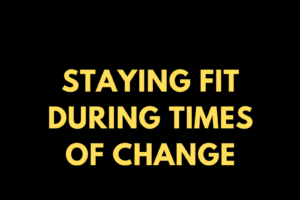Sitting at a desk all day can take a toll on your body, leading to stiffness, discomfort, and reduced mobility. Over time, this can lead to real problems such as the dreaded “tech neck,” carpal tunnel syndrome (painful condition of the wrist), and all kinds of back pain. These aches and pains can add up, affecting the quality of your life and ability to function well in your everyday tasks. Fortunately, incorporating a few simple stretches into your daily routine can work wonders in counterbalancing the effects of prolonged sitting. Here’s how to keep the aches away with 15 simple but essential stretches for office workers.
Areas of the Body Affected by Sitting at a Desk All Day
There are several areas of the body affected by sitting all day. Think about the position you gradually slump into throughout the day. Your head and shoulders start to round forward. Hips and knees are bent into 90 degrees. Wrist, especially the dominant one, moves dozens, if not hundreds, of times an hour to work your mouse or touchpad. These are the 3 main areas of concern. Let’s break them down one group at a time.
Forward Slumping Head and Shoulders
In good postural alignment, the ears are stacked in an imaginary line over the shoulders. This allows the weight of the head to be positioned right over the spine which is its happy place. It’s very easy, however, throughout the course of a long day of sitting, to slump and slouch and let the head drift forward of that line. When this happens, muscles in the front of the body, such as pectorals (chest), sternocleidomastoid (front of neck), and upper traps (the muscles between your neck and shoulders), get tighter. They also get gradually shorter, and start to feel stuck, an adaptation known as “adaptive shortening.”
On the flip side, the muscles on the back of the upper body, such as your rhomboids (muscles between your shoulder blades) and middle traps (also around your shoulder blades) get a little weaker and longer. When you combine the tighter, shorter muscles of the front with the longer, weaker muscles on the back, your neck and head are being pulled forward and it can feel like they’re getting stuck there!
Stretch the Front of Chest and Shoulders and Strengthen the Back
To counterbalance this forward slumping posture, two things need to happen. You gotta stretch the front and strengthen the back. To strengthen the back, hit the gym 2-3 times a week and do strength training exercises such as seated row, lat pulldown, and rear delt fly! Second, incorporate these great stretches daily at the office to keep the front of your body more open. Do each one for 20-30 seconds to relieve chest tightness and encourage better posture.
Upper Body Stretches for Office Workers
- Lacrosse Ball Chest Massage
- Lacrosse Ball Trap Massage
- Single Arm Wall Chest Stretch
- Cactus Arms
- Overhead Triceps Stretch
- Lateral (sideways) Neck Stretch
What to Do About Tight Hips from Sitting
The hips are the center of our body and if they are tight, they will affect the areas of the body above and below them. Next, tight hips are often the culprit behind many forms of back pain, especially lower back pain. When you sit with the hips flexed, or bent, all day, this causes adaptive shortening of quads (front of the thigh) and hip flexor muscles such as the psoas and tensor fascia latae (TFL). This pulls the pelvis into a forward tilted position, which puts a lot of pressure on the vertebrae of the lower back, thus creating some tightness, aches, and pains, which can affect the back, hips, or knees.
Stretch the Hips and Strengthen the Booty
To counteract this dysfunctional pattern, two things will help! Similarly to the upper body, you must stretch the front and strengthen the back! In the gym, 2-3 times a week, incorporate strength training exercises such as deadlifts, hip bridges/thrusts, and hip abduction. This will strengthen the glutes, lower back, and hamstrings.
To stretch the front, here are a few exercises you can incorporate daily! Do each one for 20-30 seconds!
Lower Body Stretches for Office Workers
- Foam roll the quads
- Standing quad stretch
- Standing inner thigh stretch
- Lunge + overhead reach (can be standing or kneeling)
- Supine (laying on back) figure 4
- Supine (laying on back) twist
Stretches for a Healthy Happy Wrist
Given the repetitive nature of typing and mouse use, it’s important to take proactive care of your wrists and forearms regularly. Do each for 20-30 seconds. Repeat sets as necessary to feel better!
- Lacrosse Ball Forearm Rolling
- Gentle Wrist Rolls x 10 each direction
- Gentle Finger Pull
Incorporating Stretches for Office Workers into Your Daily Routine
Making these stretches a part of your daily routine can significantly reduce the negative impact of sitting all day. Consider setting reminders to take short stretching breaks every hour or so. Not only do these stretches help physically, but they also provide a mental break, allowing you to return to your work refreshed and focused.
Finally, consistency is key. Regularly performing these stretches can lead to long-term improvements in your flexibility, posture, and overall well-being.
Recommended Reading
Why is Foam Rolling a Runner’s Best Friend?
How to Create an Awesome Garage Gym
Affiliate Disclaimer
This post contains some affiliate links, which means that I make a small commission off items you purchase at no additional cost to you. I only recommend products I know and use personally!
References
Nicolson, S. (2020). Is Your Back Pain from Adaptive Shortening? Retrieved from: https://lowbackpainprogram.com/adaptive-shortening-syndrome/










